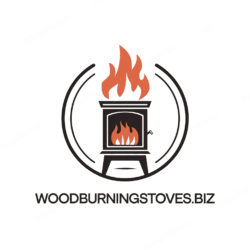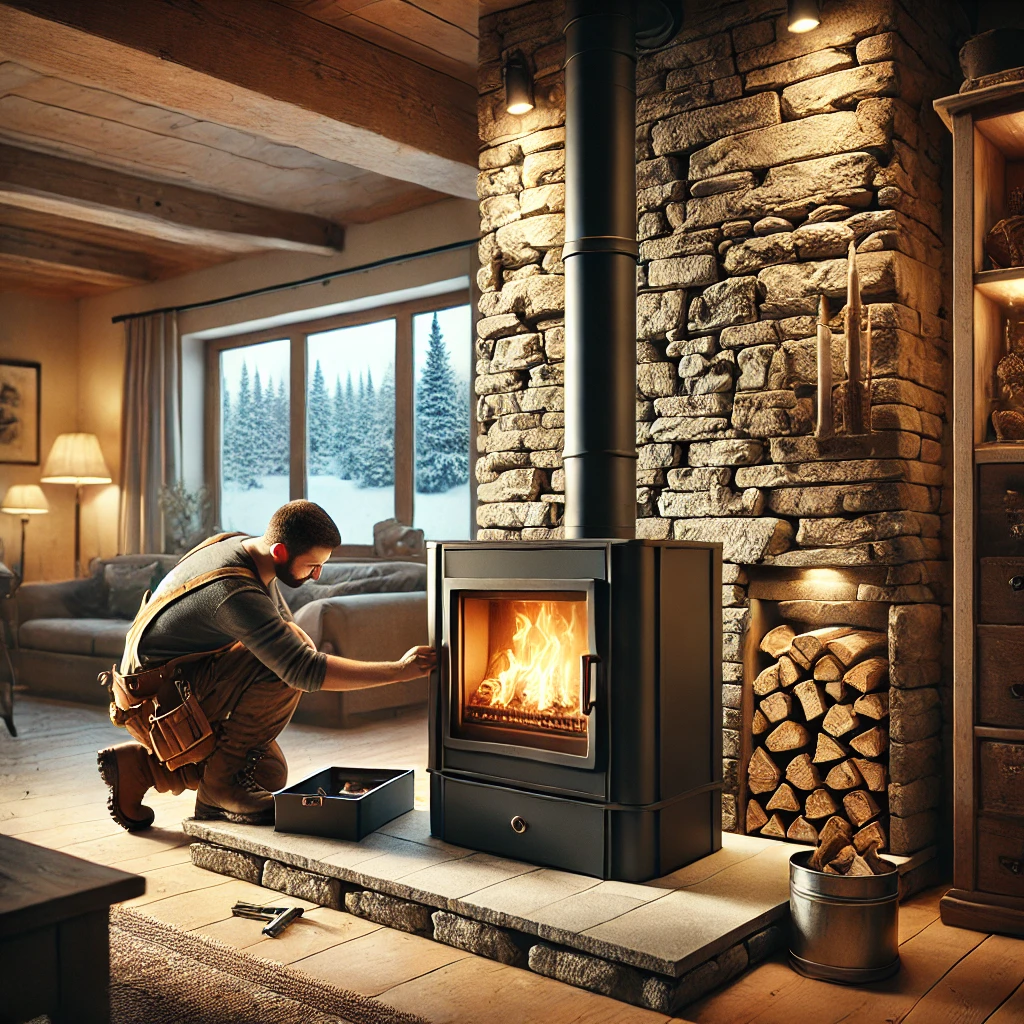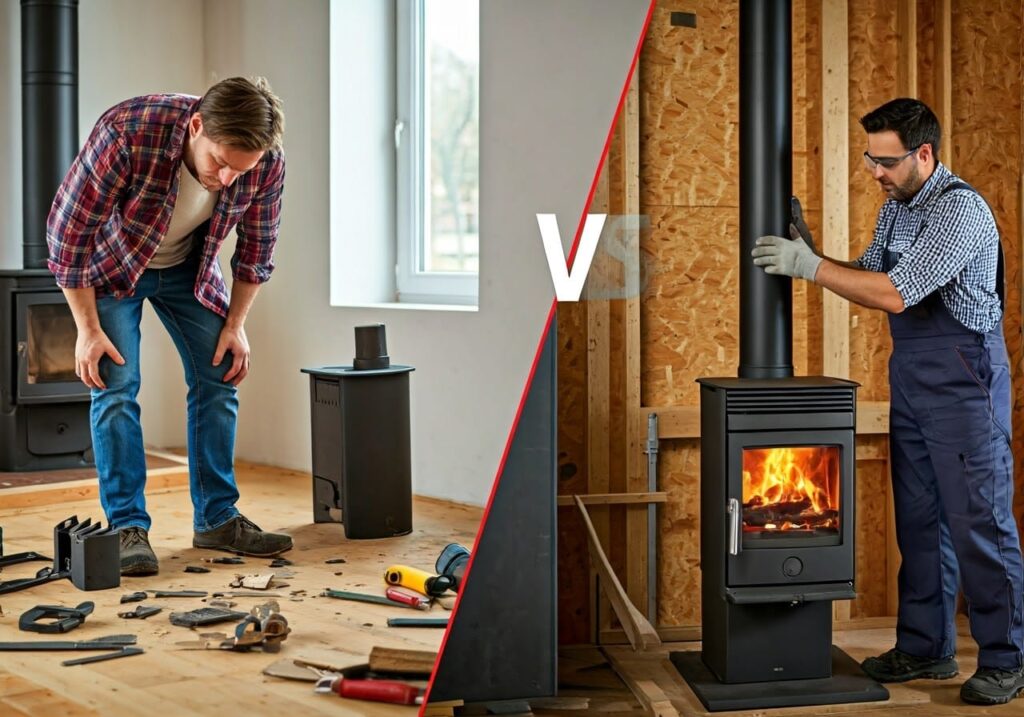Installing a wood-burning stove is an important home improvement project that requires careful planning and compliance with safety regulations in local building codes. Obtaining the necessary permits is an important step in this process, as it ensures that your installation meets all legal requirements and safety standards.

Why Permits Are Required for Wood Stove Installation
Permits are typically required for wood stove installations to:
- Ensure safety: Permits and inspections help ensure that the furnace and associated components such as chimneys or ventilation systems are properly and safely installed, reducing risk that the risk of fire, carbon monoxide spills, or other hazards is reduced
- Comply with building codes: Local building codes specify specific requirements for installing wood stoves, including removal from burning materials, adequate ventilation, and materials and methods that approved use A license ensures that your system complies with these rules.
- Save Property Value: The installation of an allowable wood stove can negatively affect the resale value of your home and may even require it to be removed by future owners or when selling the home.
- Eligibility for rebates or incentives: Many local and regional governments offer incentives, such as tax breaks or rebates, to homeowners who install energy-efficient heating systems such as wood stoves establish To qualify for these programs, you generally must have a valid license.
Common Permits Required for Wood Stove Installation
The specific permits required for a wood stove installation can vary depending on your location, but some of the most common include:
- Building Permit: A building permit is typically required to authorize the installation of a new wood stove or the replacement of an existing one. This permit ensures the stove and its installation meet local building codes.
- Electrical Permit: If your wood stove installation requires any electrical work, such as the installation of a blower or thermostat, you may need an electrical permit.
- Mechanical Permit: A mechanical permit may be necessary if the wood stove installation involves modifications to the home’s HVAC system or the installation of a new chimney or flue.
- Fire Department/Fire Marshal Permit: In some areas, you may need to obtain a permit from the local fire department or fire marshal’s office, especially if your wood stove installation is located in a high-risk fire zone.
- Environmental Permit: Depending on your local regulations, you may need to obtain an environmental permit if your wood stove does not meet the latest emissions standards or if you live in an area with specific air quality regulations.
The Permit Application Process
The process for obtaining the necessary permits for a wood stove installation typically involves the following steps:
- Research Local Requirements: Contact your local building department or permitting office to determine the specific permits required in your area, as well as the application process and associated fees.
- Gather Required Documentation: You may need to provide detailed information about the wood stove model, the installation plan, and the proposed location, as well as any necessary technical specifications or drawings.
- Submit the Permit Application: Complete the permit application form and submit it, along with any required documentation and fees, to the appropriate permitting office.
- Schedule Inspections: Once the permit is approved, you’ll need to schedule any required inspections during the installation process, such as a final inspection after the work is completed.
- Obtain the Permit: After successfully passing all necessary inspections, you’ll receive the final permit, which you should keep on hand in case of any future questions or issues.
It’s important to note that the permit application process can take several weeks or even months in some areas, so be sure to plan accordingly and factor in any potential delays when scheduling your wood stove installation.
Tool: Examples of Regulations and Permits
Consequences of Skipping the Permit Process
Attempting to install a wood stove without the proper permits can have several consequences:
- Fines or legal sanctions from local authorities
- Stove must be removed and reinstalled with proper permit
- Potential security risks and liability issues
- Difficulties in the sale of a home, as the franchise may need to be addressed
- That they are not eligible for energy efficiency rebates or tax credits
In order to avoid these risks and ensure that your wood stove installation is safe and legal, it is important to obtain all necessary permits and comply with local building authorities and qualifications following the installation instructions


